- Diversity Scholars Attend AIAA SciTech
- 2021 International Student Conference Winners Announced
- 2021 AIAA Key Issues and Recommendations
- 23rd AIAA Congressional Visits Day
- Roger W. Kahn Scholarship
- AIAA Associate Fellow Hale Died in May 2020
- AIAA Honorary Fellow Tellep Died in November
- AIAA Fellow Clayton-Townsend Died in December
- AIAA Fellow Vaughan Died in December
- AIAA Associate Fellow Vachon Died in December
- AIAA Senior Member Carruthers Died in December
- AIAA Fellow Moore Died in December
Bulletin
AIAA Foundation Diversity Scholars Attend AIAA SciTech

Fifteen AIAA Diversity Scholars attended the AIAA SciTech Forum, 11–15 & 19–21 January 2021. Scholars participated in the virtual AIAA SciTech and attended special panels and networking sessions geared specifically for the scholars.
The AIAA Diversity Scholarship provides students from underrepresented groups with the opportunity to attend AIAA forums and receive additional targeted programming that may help them succeed in the aerospace industry. This program is a collaboration between the AIAA Foundation and our sponsor, The Boeing Company.
Diversity scholarships will be offered for AIAA AVIATION Forum and ASCEND in 2021. Applications are welcome from students in all disciplines with an interest in aerospace. Please visit aiaa.org/Diversity-and-Inclusion for more information.
Diversity Scholars
Kreston Barron, Georgia Institute of Technology
Dion Bumpus, University of Alabama
Donna Coyle, University of Washington, Bothell
Cosette Geesey, Virginia Polytechnic Institute and State University
Rachel Harvey, University of Maryland – College Park
Anoop Kiran, SUNY University at Buffalo
Kelly McCarthy, Illinois Institute of Technology
Mesfin Melaku, Eastern Michigan University
Noshin Nawar, University of Arkansas – Fayetteville
Teresa Nguyen, Portland State University
Rishi Patel, Virginia Polytechnic Institute and State University
Mohammed Razzak, Illinois Institute of Technology
Adrien Redmond Stein, Columbia University
Rachael Trujillo, University of Central Florida
Eszter Varga, Virginia Polytechnic Institute and State University
Student Conferences 2021 International Student Conference Winners Announced
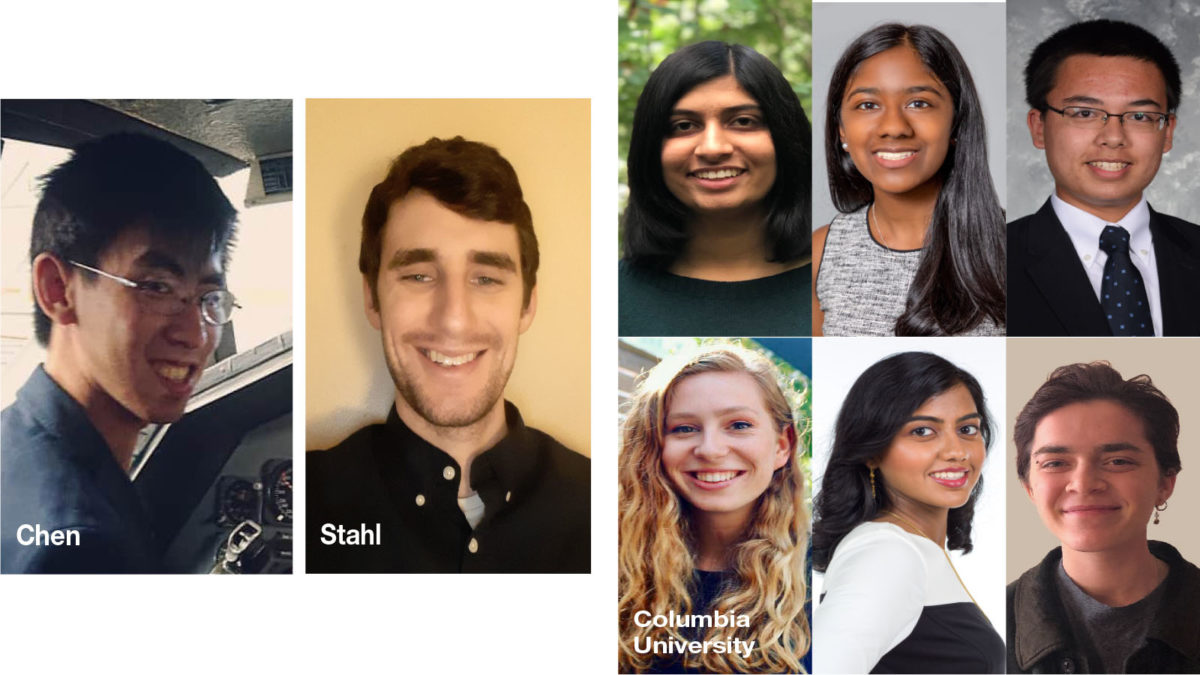
The AIAA International Student Conference took place 11–13 January in conjunction with the 2021 AIAA SciTech Forum. Students whose papers won first place at one of the 2020 AIAA Regional Student Conferences presented their papers at this professional technical conference, which offers students a chance to showcase their research at an event where they can also network with potential employers and colleagues. The winners were announced at an awards presentation on 14 January. Steve Frick, director of Space Operations at Lockheed Martin Space Systems, delivered a guest lecture to students as part of the awards program.
In the Undergraduate Category, the winner is Jeffrey Chen from Embry-Riddle Aeronautical University (Prescott, AZ) with his paper, “Bréguet Range Equation in Constraint Analysis Form for Power-Rated Aircraft for Power-Rated Aircraft.”
In the Masters Category, the winner is Spencer Stahl from Ohio State University (Columbus, OH) with his paper, “Effects of Fountain Flow Interaction on Dual Jet Impingement at Mixed Operating Conditions.”
In the Team Category, the winner is Columbia University (New York, NY), with their paper “Sharp-edge Handheld Identifier and Remover in Low-gravity Extravehicular Environments.” The team members from Columbia University are Natasha Dada, Kalpana Ganeshan, Matthew Groll, Sophia Kolak, Swati Ravi, and Adrien Stein.
Dates for the 2021 Regional Student Conferences can be aiaa.org/get-involved/students-educators/student-conferences. For more information, contact Michael Lagana at michaell@aiaa.org.
Thank you to Lockheed Martin Corporation for sponsoring the 2021 conference. AIAA also would like to thank the professional members who gave their time to be judges on this program and evaluate student presentations. Without their participation, this program would not be possible. 2021 judges are Allen Arrington, Chris Thames, Dakshina Fernando, G. Alan Lowery, Joe Marshall, Prashanth Bangalore Venkatesh, Steve Triolo, and Thomas Snitch, with Chris Tavares, Paul Park, and Jane Hansen serving as session chairs.
Public Policy 2021 AIAA Key Issues and Recommendations
The U.S. aerospace and defense (A&D) industry is a multi-trillion-dollar enterprise that supports millions of direct and indirect jobs nationally and many more globally. The coronavirus pandemic has had a huge economic impact on A&D. It is critical that substantial action be taken in a timely manner to address the needs of the industry during this uncertain time and to return us to some version of normalcy. Failure to act will likely lead to economic decline and emboldened international threats. Consequently, to protect A&D, the following Key Issues are focused on recovery and sustainment, including leveraging A&D as a catalyst to lead other segments of the economy back to health and growth in the coming years.
The industry has and will continue to directly address critical issues facing our nation. This includes stepping up in response to the crisis by rapidly producing and transporting needed Personal Protective Equipment, developing and delivering critical ventilators, and now distributing the COVID-19 vaccines. The sector is critical for addressing climate change by developing the necessary new technologies that reduce aviation carbon emissions and provide for a more sustainable future. In addition, the sector provides significant opportunity for young people of all races and economic conditions to tackle the complex challenges of defending our way of life and consistently improving our society.
Actions taken (or missed) now for the A&D sector will affect the nation for many years to come. AIAA urges decision makers to enact and support policies that will allow sustainment of this vital industry during these difficult times and result in a robust and world-leading A&D sector. More specifically, the Institute recommends:
• Providing stable and sustained funding for the entire A&D sector (DOD, NASA, FAA, other applied research and development, small businesses) to ensure the United States emerges from the pandemic with its global leadership in this area intact.
• Supporting initiatives for national and global cooperation to enable the commercial aviation market to return to full operation – such as standardized health management measures and tasking the FAA to lead the harmonization of regulations and policy.
• Continuing to invest in A&D research and development – this is the source of new technologies and products that will ensure future job growth, address climate change, provide needed opportunities for young people of all backgrounds, address evolving threats, and global leadership.
• Developing public/private partnerships at national, state, and local levels to dramatically improve (in quality and quantity) the STEM pipeline – our future workforce.
The full set of 2021 Key Issues can be found at aiaa.org/advocacy/Key-Issues and Supplemental Information Papers can be found at aiaa.org/advocacy/Policy-Papers/Information-Papers.
Public Policy 23rd AIAA Congressional Visits Day
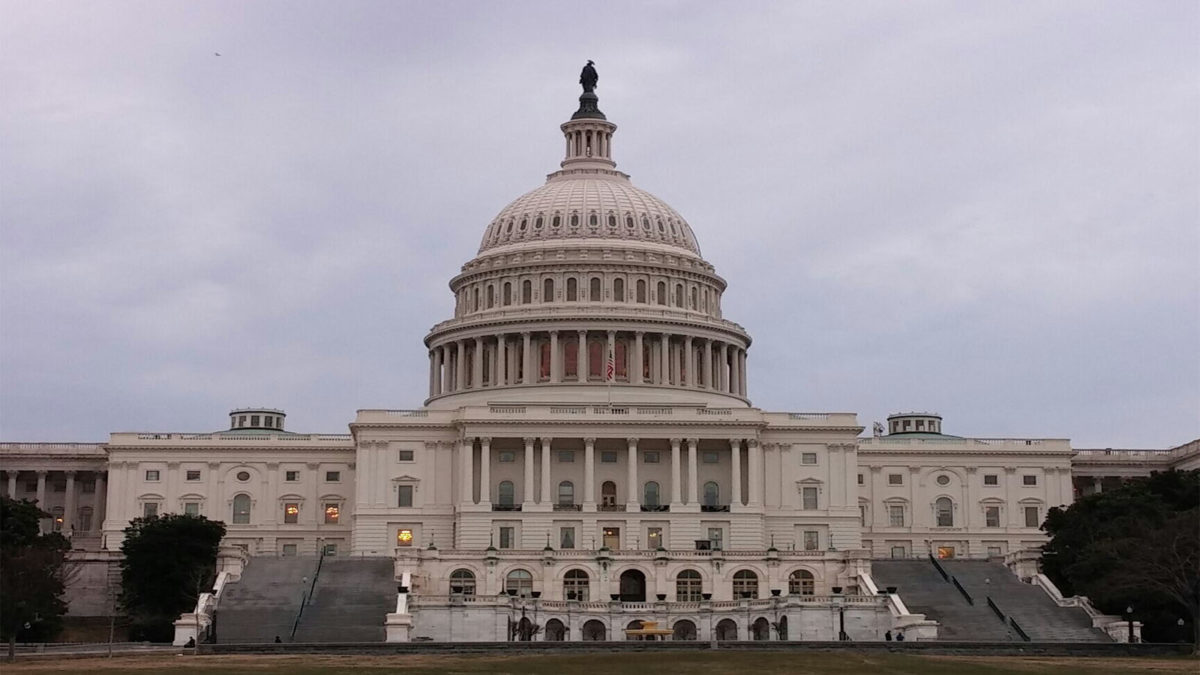
15–19 March • Register: aiaa.org/cvd
Your voice is important to hear. Our members’ participation in the 23rd annual Congressional Visits Day will be invaluable during a time when COVID-19 is weakening the resilient aerospace and defense industry. The program will be unlike any previous year—it will be entirely virtual and take place over an entire week.
AIAA Foundation Roger W. Kahn Scholarship
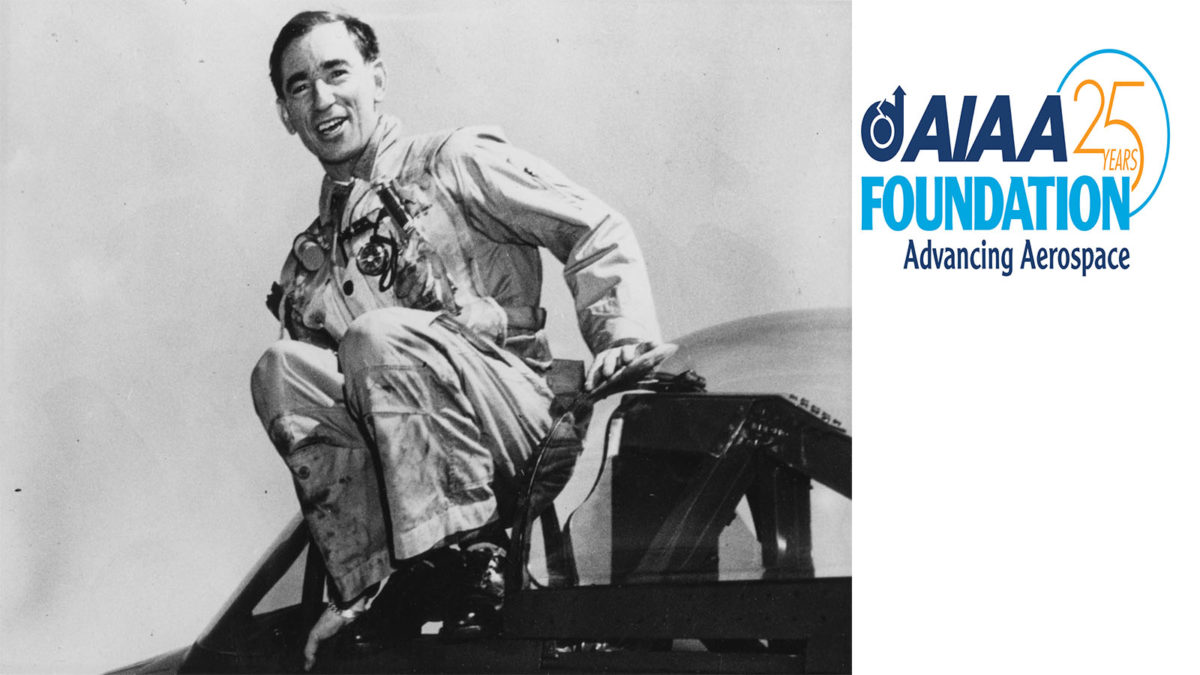
AIAA is excited to announce the Roger W. Kahn Scholarship to honor the memory of Roger Kahn and his passion for aviation and entertainment. Kahn spent his career at Grumman Aircraft Engineering Corporation as a test pilot and then managing the technical service and sales division. In the 1940s, Kahn was actively involved with the Institute of the Aeronautical Sciences (one of the predecessor organizations of AIAA) and later became its vice-president. Kahn was also an accomplished jazz musician, responsible for composing the song “Crazy Rhythm” from the movie Casablanca.
AIAA will award up to four $10,000 Roger W. Kahn Scholarships to high school seniors who enroll in an accredited college or university and intend to pursue an aerospace or STEM major. AIAA will also furnish a $2,500 travel stipend for the students to attend an AIAA event such as AIAA SciTech Forum, AIAA AVIATION Forum, or ASCEND. The Institute will provide each student with a mentor from AIAA’s professional members to help guide the student to achieve a career in aerospace. The application is open until 1 March 2021. Underrepresented students are encouraged to apply.
To apply, visit aiaa.org/get-involved/k-12-students/scholarships. For more information, email K-12STEM@aiaa.org.
Obituary AIAA Associate Fellow Hale Died in May 2020
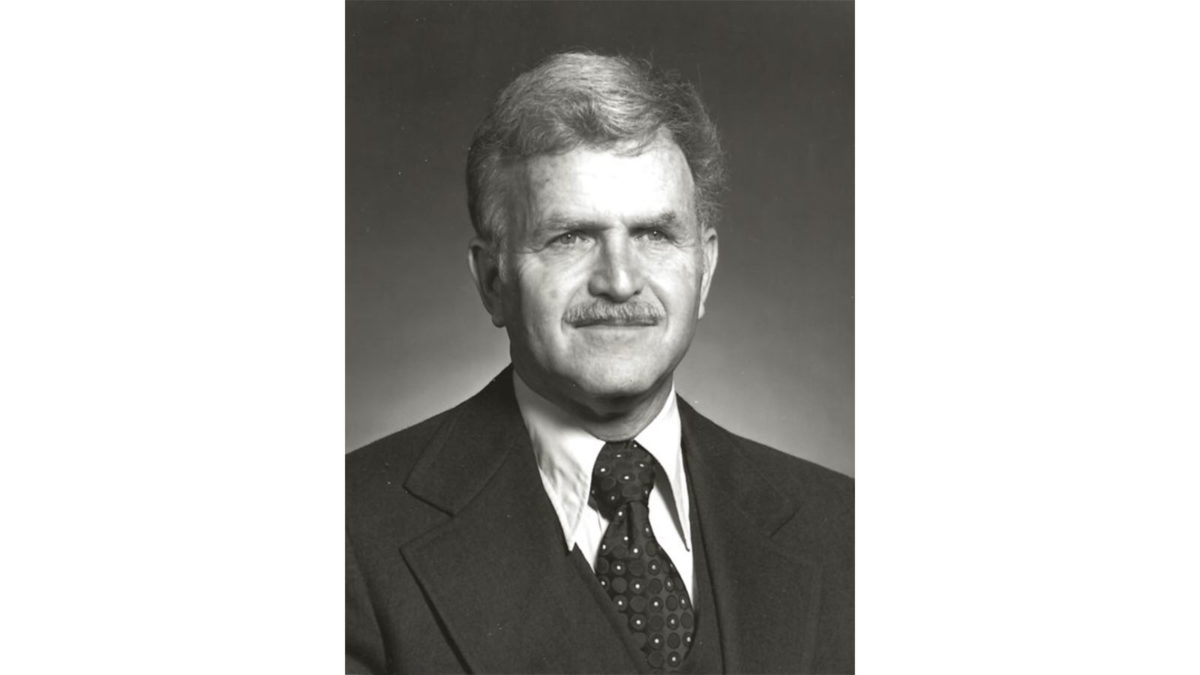
Francis J. Hale died 5 May 2020.
Dr. Hale entered the United States Military Academy at West Point in 1941, and was commissioned in the Corps of Engineers on D-day, 6 June 1944. He served the Army and Air Force for 22 years, rising to the rank of Colonel.
During those years he completed Parachute School at Fort Benning, GA, and served with a combat engineer battalion in Europe until mid-1945. Thereafter, he retrained with the Army Map Service and was the officer in charge of mapping uncharted islands in the Philippines. By order of President Truman, he was one of 62 officers selected by Major General Leslie Groves to develop a military capability to assemble and deploy atomic bombs at the research facility at Sandia AFB, NM. He spent five months on Eniwetok Atoll during Operation Sandstone where the United States tested three atomic bombs.
Transferring to the Air Force at its creation in 1947, he became a flight instructor in the P-51 at Nellis AFB, transitioning to the early jet fighters. From there, he was sent to the Massachusetts Institute of Technology for his Master of Science. Upon graduation from MIT, he went to Eglin AFB as Director of Ballistics. In 1956 he was transferred to Los Angeles as a member of the Western Development Division (code name for the USAF Ballistic Missile Division, Air Research and Development Command) where he served first as deputy director of the Thor missile program and later in the development of the Minuteman.
In 1959, he returned to MIT where he earned his Ph.D. in Mechanical and Aerospace Engineering with a thesis on the boundary layers of an MHD accelerator for space propulsion. His next assignment was to the USAF Academy as the Professor and Head of the Department of Astronautics. In 1962, he was assigned to the Pentagon as Deputy Director for Research and Development, Directorate of Development Plans, Headquarters USAF.
In 1965 he retired from the Pentagon and joined the faculty of North Carolina State University (NCSU) where he remained as a Professor of Mechanical & Aerospace Engineering until his second retirement in 1989. At NCSU, he called upon his military experiences to create new and effective aerospace engineering courses, and to write three textbooks and collaborate on a fourth with Dr. Jesse Doolittle. During his years at NCSU, Dr. Hale left the campus for a year on three occasions; in 1972 to the Middle East Technical University in Ankara, Turkey, in 1976 to West Point as the first civilian Professor of Mechanics, and in 1982 to Wrightsville Beach, NC, to serve as the Technical Director of the Desalination Test Facility of the Department of the Interior. In 1990, he taught at the U.S. Naval Academy as a Secretary of the Navy Fellow in Aerospace Engineering. He taught two professional development courses each year for AIAA on aircraft design and space flight until 2013.
Dr Hale was also a member of the American Society of Mechanical Engineers and the Society of Automotive Engineers (Ralph R. Teeter Educational Award, 1985), In 2006 he was named to the Air Force Space and Missile Pioneers Hall of Fame, Peterson AFB.
Obituary AIAA Honorary Fellow Tellep Died in November
Daniel M. Tellep, retired Chairman and CEO of the Lockheed Martin Corporation, died on 26 November 2020. He was 89.
Tellep attended the University of California at Berkeley, graduating magna cum laude with a degree in Mechanical Engineering in 1954 and then earned his Master of Science degree the following year. He credited his professors at Berkeley for a transformative opening of his mind to the “elegance of mathematics and equations.” In 1971, he completed advanced management studies at Harvard University, Graduate School of Business Administration.
In 1955, Tellep began his 43-year career in the aerospace industry working on re-entry technology at Lockheed Corp. as a principal scientist in the Missiles & Space Co. subsidiary. Tellep was named president in 1984, and in 1989, he was selected to lead Lockheed Corporation as CEO and Chairman.
Following the collapse of communism and in an era of shrinking defense budgets, Tellep reached out to his friend and competitor Norm Augustine (CEO, Martin Marietta) and proposed a merger, resulting in the formation of Lockheed Martin Corporation in 1995. Tellep and Augustine spent a year secretly negotiating the deal, using fake names to meet in off-the-radar cities to discuss the details. The merger created the world’s largest defense company, with a combined rich history dating back to the early days of aviation. Tellep became Lockheed Martin’s first chairman and CEO in 1995. He served as CEO for only nine months, but he remained as chairman until 1998.
When reflecting on his career, he reveled in the camaraderie and respectful collegiality of his fellow men and women scientists. He loved the challenge of finding creative solutions with his teams. As a manager and executive, he was known for his handwritten notes of acknowledgment and gratitude to employees, as well as his initiation of the morale building annual “Beat the Boss” run.
Though honored with many awards for aerospace engineering, management and manufacturing throughout his career, he cherished the AIAA Lawrence B. Sperry Award conferred on him in 1964, when he was 32. The award recognized his contributions to re-entry technology and thermodynamics in aerospace programs. His legacy as a scientist and scholar continues through the University of California Berkeley Daniel M. Tellep Distinguished Professorship in Engineering endowment fund. He was also recognized with the 1986 AIAA Missile Systems Award for for over 25 years of major technical and leadership roles in the research and development of advanced missile/payload systems and for his contributions to the success of each generation of Fleet Ballistic Missile programs.
Outside of work, Tellep was an accomplished pilot who loved to fly sailplanes above the slopes of the High Sierras and Colorado Rockies. His logbooks record over 600 hours of soaring and more than 4,500 miles of cross-country flight.
Obituary AIAA Fellow Clayton-Townsend Died in December
JoAnn Clayton-Townsend, former director of the Aeronautics and Space Engineering Board (ASEB) at the National Academy of Sciences, died on 21 December.
Townsend received her B.A. at the University of Tulsa. She travelled extensively with her husband who worked for United States Information Service, a division of the State Department’s Foreign Service. While in Israel, Townsend attended the Ulpan Hebrew language training for immigrants and she also worked on several archaeological digs. She was president of the Turkish-American Women’s Society for a year, and the following year, she and a friend established the first English language travel magazine in Turkey. Returning to the United States, Townsend worked as the personal assistant to the Foreign Secretary of National Academy of Sciences from 1963 until 1966. Between 1974 and 1977, Townsend worked for several years on Capitol Hill as Legislative Assistant to Congressmen Berkeley Bedell from Iowa, Charles Whalen of Ohio, and Matthew Rinaldo from New Jersey.
After the death of her first husband, Townsend decided to re-join the staff of the National Academy of Sciences (NAS). One of her first assignments was as a staff officer for a committee writing a report for NASA on President Reagan’s decision to cancel the U.S. portion of the NASA-ESA International Solar Polar Mission (ISPM). As her fascination with the space program grew, she pursued a Master’s degree in Space Policy at George Washington University. Within a few years of completing her degree she rose to become the director of the Aeronautics and Space Engineering Board (ASEB) at NAS.
Townsend’s contributions to the U.S. space program were recognized by her peers when she was elected as a Fellow of AIAA in 2003. Women in Aerospace presented her with its Outstanding Achievement Award in 1991 and Outstanding Member Award in 1997. She was a member of the International Institute of Space Law and editor of its annual proceedings for many years. She also was a member of the International Academy of Astronautics.
While working at ASEB she married Dr. John (Jack) Townsend, a former director of NASA Goddard Space Flight Center, a Fairchild Industries Vice President, and also a Fellow of AIAA. In 1997, Townsend retired from ASEB to pursue her dream of becoming an artist. She remained involved in AIAA as a member of the AIAA International Activities Committee (2001–2005) and the AIAA Public Policy Committee (1993–2005).
Obituary AIAA Fellow Vaughan Died in December
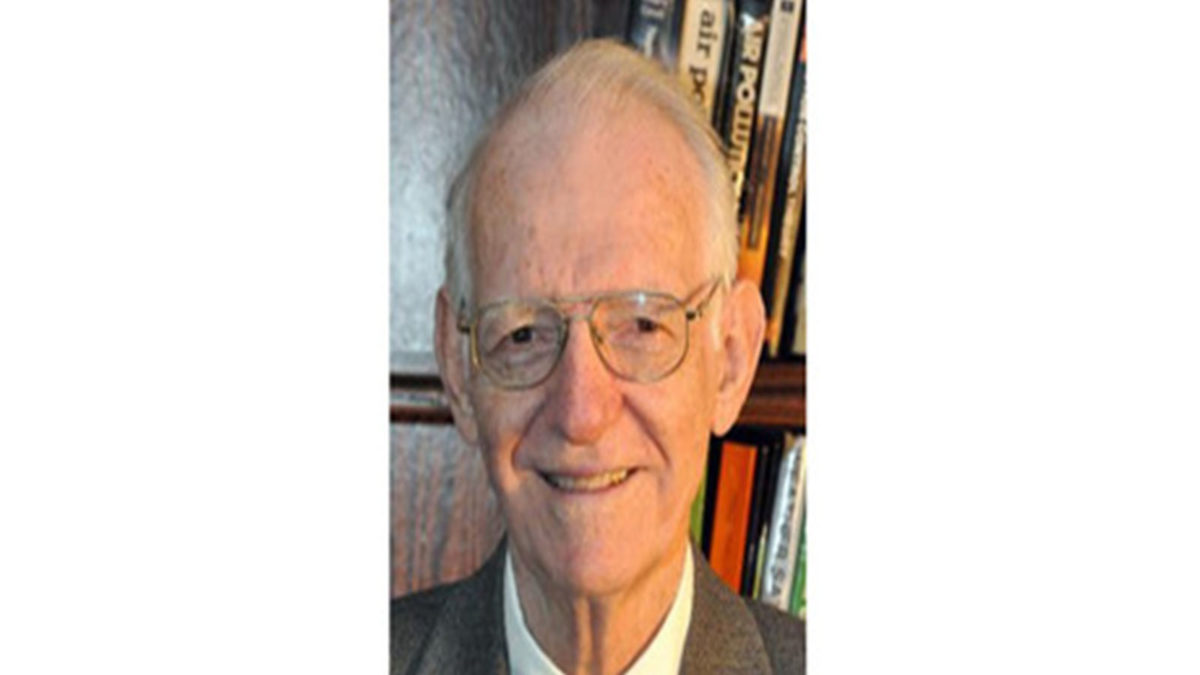
William W. Vaughan Jr., 90, died on 23 December.
Dr. Vaughan graduated from the University of Florida with honors in Mathematics and Physical Science. He then obtained a graduate degree at Florida State University in Atmospheric Science and received his Ph.D. in Engineering Science from the University of Tennessee.
During his career, Dr. Vaughan served as Captain in the U.S. Air Force, Chief of the Atmospheric Science and Aerospace Environment Divisions with NASA, and was a charter member of the Federal Senior Executive Service. His responsibilities included the establishment and interpretation of aerospace environment requirements for the design and operation of space vehicles and spacecraft including Jupiter vehicles, Apollo-Saturn vehicle, Space Shuttle, National Aerospace Plane and the International Space Station.
After retiring from NASA, Dr. Vaughan became a NASA Emeritus, Director of the Research Institute as well as professor of atmospheric science at the University of Alabama in Huntsville. Following his retirement from the University of Alabama, he enjoyed being senior docent at the U.S. Space and Rocket Center in Huntsville.
A long-term AIAA standards volunteer, Dr. Vaughan was the first chairman of the AIAA Standards Executive Council (2010–2012). He was a Fellow of AIAA and the American Meteorological Society (AMS). He was a former member of the International Space Standards Organization and professional member of the American Geophysical Union, American Association for Advancement of Science, Standards Engineering Society and American Society of Mechanical Engineers. He authored or co-authored more than 120 technical reports and journal articles. He was also former Associate Editor of the Journal of Aerospace Technology and Management.
He was recognized with many awards including the AIAA Distinguished Service Award (2007), the AIAA Excellence in Aerospace Standardization Award (2003), and the AIAA Losey Atmospheric Sciences Award (1980). He also received Outstanding Performance Awards (NASA, Air Force, Army), NASA Exceptional Service Medal, the AIAA Hermann Oberth Award, and IES Maurice Simpson Technical Editors Award.
Obituary AIAA Associate Fellow Vachon Died in December
Reginald “Reggie” Vachon died on 24 December.
Vachon attended the United States Naval Academy, Auburn University, and Oklahoma State University. He earned a bachelor’s in mechanical engineering, a master’s in nuclear science, and a Ph.D. in mechanical and aeronautical engineering. He augmented these degrees with an LL.B. at Jones Law School in Montgomery, AL, and certificates from the U.S. Army Command and General Staff College and the U.S. Army War College.
He was an engineer with NASA and the U.S. Army, and the founder and chair of several engineering companies. He was a registered engineer in six states, Europe, and Asia. Vachon was a member of the Alabama State Bar. He had a distinguished academic career as chaired professor of mechanical engineering at Auburn University and adjunct professor at Purdue University.
He served in leadership positions as president of the American Society of Mechanical Engineers, chair of the American Association of Engineering Societies, president of the Pan American Academy of Engineers, vice president north (US, Canada, Mexico) of the Union of Pan American Engineering Societies, and executive vice president of the World Federation of Engineering Organizations. Vachon was also a Fellow with the National Society of Professional Engineers, the American Society of Civil Engineers, and an Associate Fellow of AIAA. He was a life member of the American Society of Engineering Education, and a member of IEEE, the UK Institution of Mechanical Engineers, the Institute of Engineers Singapore, the Hong Kong Institute of Engineers, and the International Nuclear Energy Academy.
Vachon proudly served his county and retired as a colonel in the U.S. Army Corps of Engineers. His last duty was during Desert Storm.
Vachon was a recipient of the Outstanding Teacher Award from ASEE. He held a patent in his field and was the author of numerous technical papers. In 2019 he was awarded the ASME Medal for eminent and distinguished achievement in engineering.
Obituary AIAA Senior Member Carruthers Died in December
George R. Carruthers, an astrophysicist and engineer who was the principal designer of a telescope that went to the moon as part of NASA’s Apollo 16 mission in 1972 in an effort to examine Earth’s atmosphere and the composition of interstellar space, died on 26 December. He was 81.
At the University of Illinois at Urbana-Champaign, he received a bachelor’s degree in aeronautical engineering in 1961, a master’s degree in nuclear engineering in 1962, and a doctorate in aeronautical and astronautical engineering in 1964. He then became a research physicist at the Naval Research Laboratory.
Dr. Carruthers led a team that designed a telescope that could electronically amplify images from space through a series of lenses, prism and mirror, just three inches in diameter. By converting photons to electrons, the images could be recorded on film. In 1970, an early model of his telescope was included in an unmanned rocket flight that found the first evidence of molecular hydrogen in interstellar space.
When mounted on a tripod, Dr. Carruthers’s lightweight magnesium telescope stood about four feet high. It was covered in gold plate to protect it from the moon’s extreme temperatures. It was used on 21 April 1972, on the Apollo 16 lunar mission, and captured more than 200 images of Earth’s atmosphere, hundreds of stars and distant galaxies.
Dr. Carruthers continued to refine his telescopes and develop experiments at the Naval Research Laboratory for decades. In 1986, one of his instruments captured an ultraviolet image of Halley’s comet. He also designed instruments used aboard Skylab and space shuttle flights and for satellites measuring polar auroras and luminescence in the upper atmosphere.
Beginning in the 1980s, Dr. Carruthers worked extensively with science outreach programs, particularly in schools with large numbers of Black students. He developed an apprentice program for high school students at the Naval Research Laboratory and taught summer courses for science teachers in D.C. public schools.
After retiring from the research laboratory in 2002, he taught Earth and space science for several years at Howard University. Dr. Carruthers received the NASA Exceptional Scientific Achievement Medal and was named to the National Inventors Hall of Fame. He also received the National Medal of Technology and Innovation, presented by President Barack Obama at a White House ceremony in 2013.




